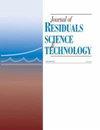Validation and Application of Ultrasound-assisted Extraction Coupled with ICP-MS for Determination of Toxic Metals in Fine Particles
引用次数: 1
Abstract
Analysis of chemical compositions of fine particle matters (PM2.5) in contaminated atmospheres has increasingly become a great concern of both scientific and technological importance because the contaminant concentrations of PM2.5 are playing an important role in affecting PM2.5-induced adverse effects on environment and human health. In this paper, ultrasound-assisted extraction coupled with ICP-MS was developed for a simultaneous quantification of 12 toxic elements (Be, Al, Cr, Mn, Ni, As, Se, Sb, Tl, Pb, Hg and Cd) in PM2.5 samples. The proposed method was validated with several parameters, namely linearity of calibration, precision and accuracy, limit of detection (LOD) and limit of quantification (LOQ). The accuracy of the proposed method was validated with recovery tests of different samples spiked with corresponding elements at known concentrations (5, 10 and 20 μg/L) and the average percent recovery varied in the range of 87.3–101.3%. The results showed that this method was a multi-element technique featuring high precision and accuracy as well as low LOD. This proposed method was applied to a simultaneous determination of the 12 target elements in atmospheric fine particles collected from a heavily polluted urban residential area in China, and showed that the particles were rich in Al, Pb and Mn, followed by As, Sb, Cr, Cd, Se and Ni. The main advantages of the ultrasound-assisted extraction process were fast sample treatment and low consumption of reagents in the extraction process.超声辅助萃取- ICP-MS法测定细颗粒中有毒金属的验证与应用
由于PM2.5的污染物浓度在影响PM2.5对环境和人体健康的不良影响中起着重要作用,因此对污染大气中细颗粒物(PM2.5)化学成分的分析日益成为一个备受关注的科学和技术问题。采用超声辅助萃取- ICP-MS同时测定PM2.5样品中Be、Al、Cr、Mn、Ni、As、Se、Sb、Tl、Pb、Hg、Cd等12种有毒元素。用标定线性度、精密度和准确度、检出限(LOD)和定量限(LOQ)等参数对方法进行了验证。在已知浓度(5、10和20 μg/L)下,对不同样品添加相应元素的回收率进行了验证,平均回收率在87.3 ~ 101.3%之间。结果表明,该方法是一种精密度、准确度高、低LOD的多元素技术。将该方法应用于中国某城市重度污染居住区大气细颗粒物中12种目标元素的同时测定,结果表明,大气细颗粒物中Al、Pb、Mn含量最高,As、Sb、Cr、Cd、Se、Ni含量次之。超声辅助提取工艺的主要优点是样品处理速度快,提取过程中试剂消耗少。
本文章由计算机程序翻译,如有差异,请以英文原文为准。
求助全文
约1分钟内获得全文
求助全文
来源期刊

Journal of Residuals Science & Technology
环境科学-工程:环境
自引率
0.00%
发文量
0
审稿时长
>36 weeks
期刊介绍:
The international Journal of Residuals Science & Technology (JRST) is a blind-refereed quarterly devoted to conscientious analysis and commentary regarding significant environmental sciences-oriented research and technical management of residuals in the environment. The journal provides a forum for scientific investigations addressing contamination within environmental media of air, water, soil, and biota and also offers studies exploring source, fate, transport, and ecological effects of environmental contamination.
 求助内容:
求助内容: 应助结果提醒方式:
应助结果提醒方式:


